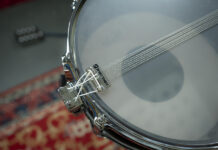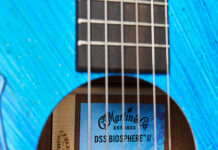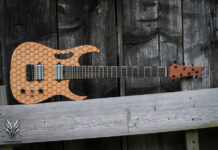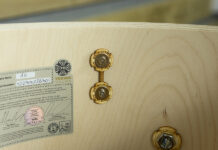
Tips on Precision String Bending
String bending is one of the most effective techniques one can use to lend expression and emotion to lead lines.
When done well, bent notes can emulate the lyrical, singing quality of the human voice and make a melody really “speak” with authority and a deep sense of feeling. This is especially true of bent vibratos, wherein a string is first bent up to a specific pitch and finger vibrato is then added to the bent note.
In this lesson, I present a variety of ways to fortify and improve one’s string bending technique.
To me, the most important aspect of bending is achieving good intonation (pitch centering) and making sure your bends are properly in tune. Few things sound worse than a bend that is out of tune and indecisive. Let’s begin with a scale shape that just about every electric guitar player is well familiar with, the E minor pentatonic scale, as played in 12th position (see FIGURE 1).
The idea with our first exercise, shown in FIGURE 2, is to fret a note in the E minor pentatonic scale and then bend the string up to the next scale tone, return to the unbent note and then pull-off to the next lower scale degree. On beat one, I bend the G note, sixth string/15th fret, up one whole step to A, release the bend back to G, and then pull off to E at the 12th fret. Repeat this three-note phrase over and over until it feels comfortable and every bend is as close to being perfectly in tune as possible.
In FIGURE 3, we move to the fifth string and bend the B note at the 14th fret up one and one half steps to D, release the bend, then pull off to A and hammer on back to B. Again, repeat the sequence until it feels comfortable and every bend is intonated properly. The process is then moved up to the D, G, B and high E strings in FIGURES 4 and 5. Another very cool, useful technique is ghost bending, wherein a string is silently bent before it is picked, so that the first thing you hear is the bent note, after which the bend is released and pulled off to the next lower scale tone, as demonstrated in FIGURE 6.
In FIGURE 7, I apply the technique to a series of eighth-note triplets that ascend from the lower strings to the higher strings. Another great string-bending technique is what’s known as over-bending, which entails bending a note beyond one and a half steps. A great many of our favorite guitarists—Jimi Hendrix, Jeff Beck, Albert King and Eric Clapton, to name a few—are masters of this technique. Maintaining good intonation becomes more of a challenge when targeting specific pitches with extra wide bends. FIGURE 8 offers a very useful over-bending exercise. A common approach when working on a specific technique is to apply it to a single string while ascending or descending the fretboard.
FIGURES 9 and 10 illustrate the precision bending technique while ascending the high E and B strings. In our final example, FIGURE 11, I’m bending with my index finger alone, which requires a good amount of fret-hand strength, as no additional fingers are available to help you push or pull the string, as they would be if bending with any of the other fingers. I begin with a hammer/pull between two notes, using my index and ring fingers, after which the note fretted with the index finger is bent up a whole step, released and vibrato-ed. I find this last example to be especially expressive use this technique all the time in my solos.
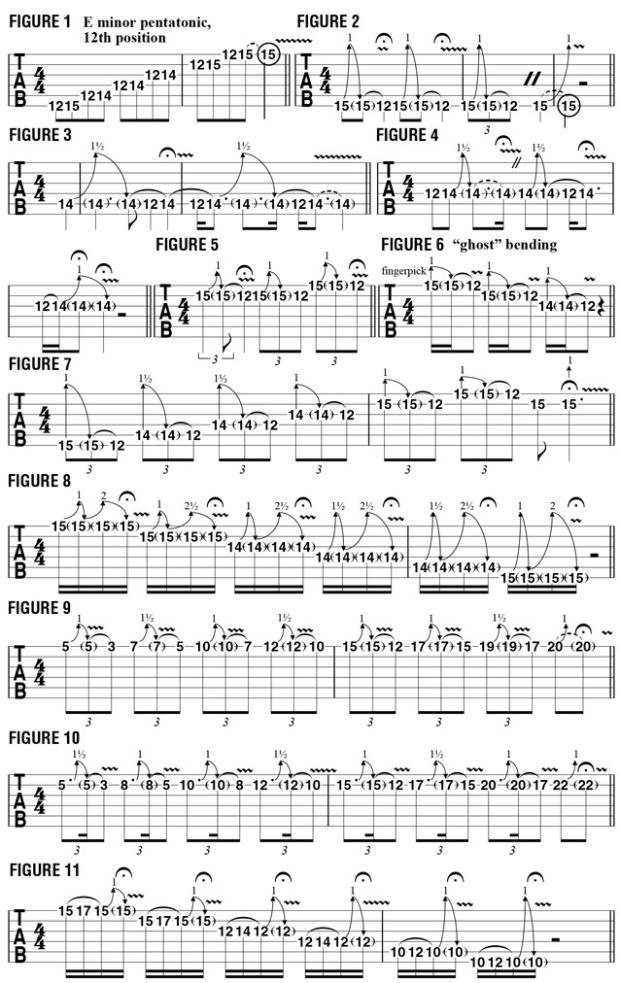
Source: www.guitarworld.com

